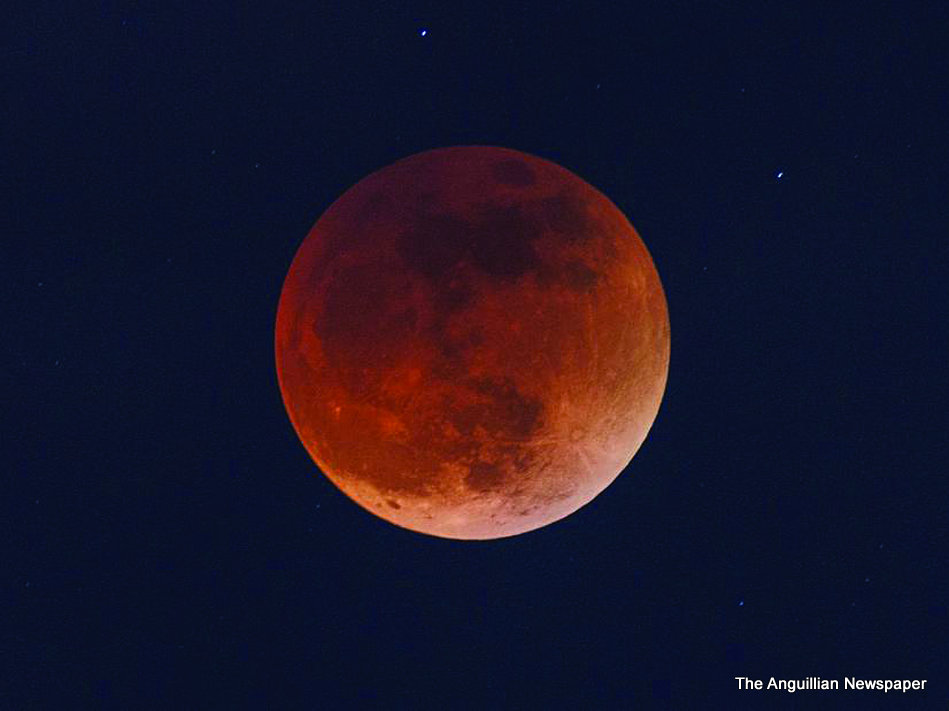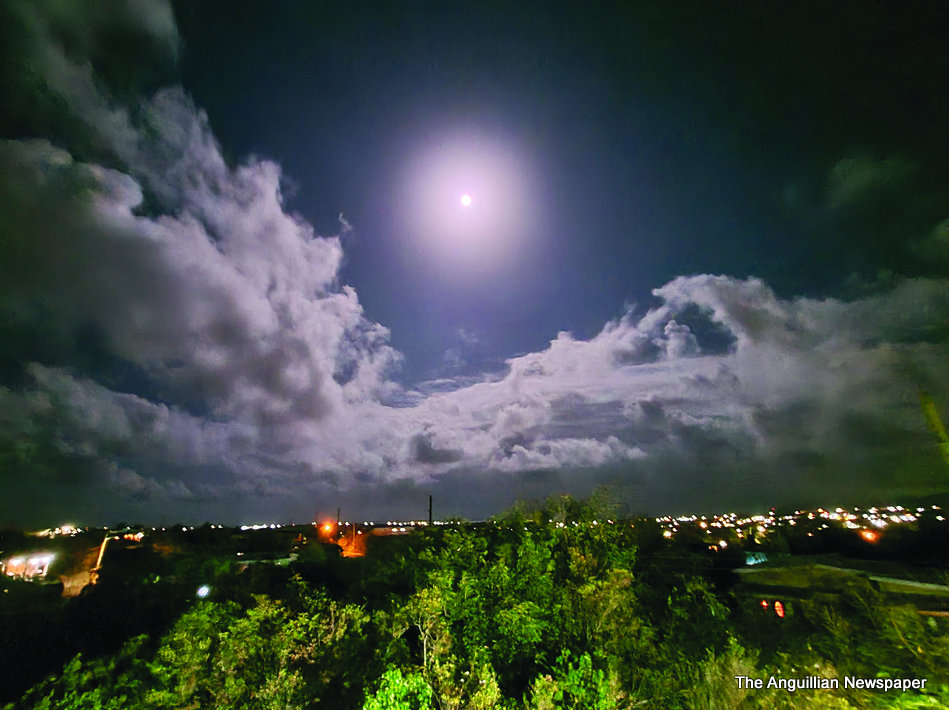Anguilla is well-known for a plethora of natural wonders – friendly people, colourful rainbows, beautiful beaches, radiant sunsets and romantic moonlight nights.
Around midnight on Sunday, May 15, an observant person could have added the “Super Flower Blood Moon” to Anguilla’s trove of natural wonders, except that it was not only observed by us here in Anguilla, but it would also have been observed and captured by millions of people in many countries around the world.
Stargazers around the world would have noticed that the moon seemed to glow red on Sunday night and the early hours of Monday, after a total lunar eclipse that saw the sun, earth and moon form a straight line in the night sky.
During a full lunar eclipse, the moon passes through the darkest part of the earth’s shadow — the umbra. When the moon is within the umbra it gets a reddish hue because blue and green light get more easily scattered by dust particles in the atmosphere, and orange and red colours remain more visible, according to NASA. Lunar eclipses are sometimes called blood moons because of this phenomenon.
Although the lunar eclipse peaked for only a short amount of time, the moon appeared to maintain its coppery tones throughout the night, making it a particularly interesting celestial phenomenon to watch.
On average, about two lunar eclipses occur each year, and I am forever grateful that I was able to bask in the awesome wonder of this year’s May “Super Flower Blood Moon”.
Just in case you missed this one, the next total lunar eclipse will occur in November, 2022. So, keep a note of the date and make plans to view it. Get outdoors, find an open area away from the night lights and, with a wide view of the sky, grab a reclining chair or a blanket so you can look straight up. Give your eyes about 20 to 30 minutes — without looking at your phone or other electronics — to adjust to the darkness, and observe an awesome sight.
After the next total lunar eclipse in November, there will not be another one until March 2025.










